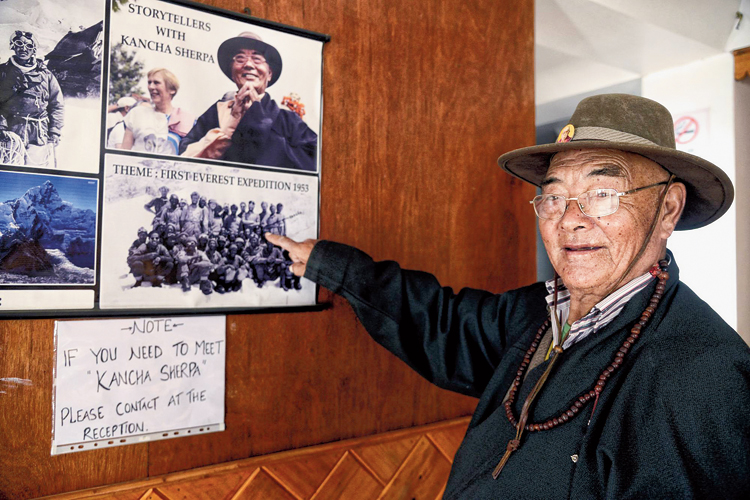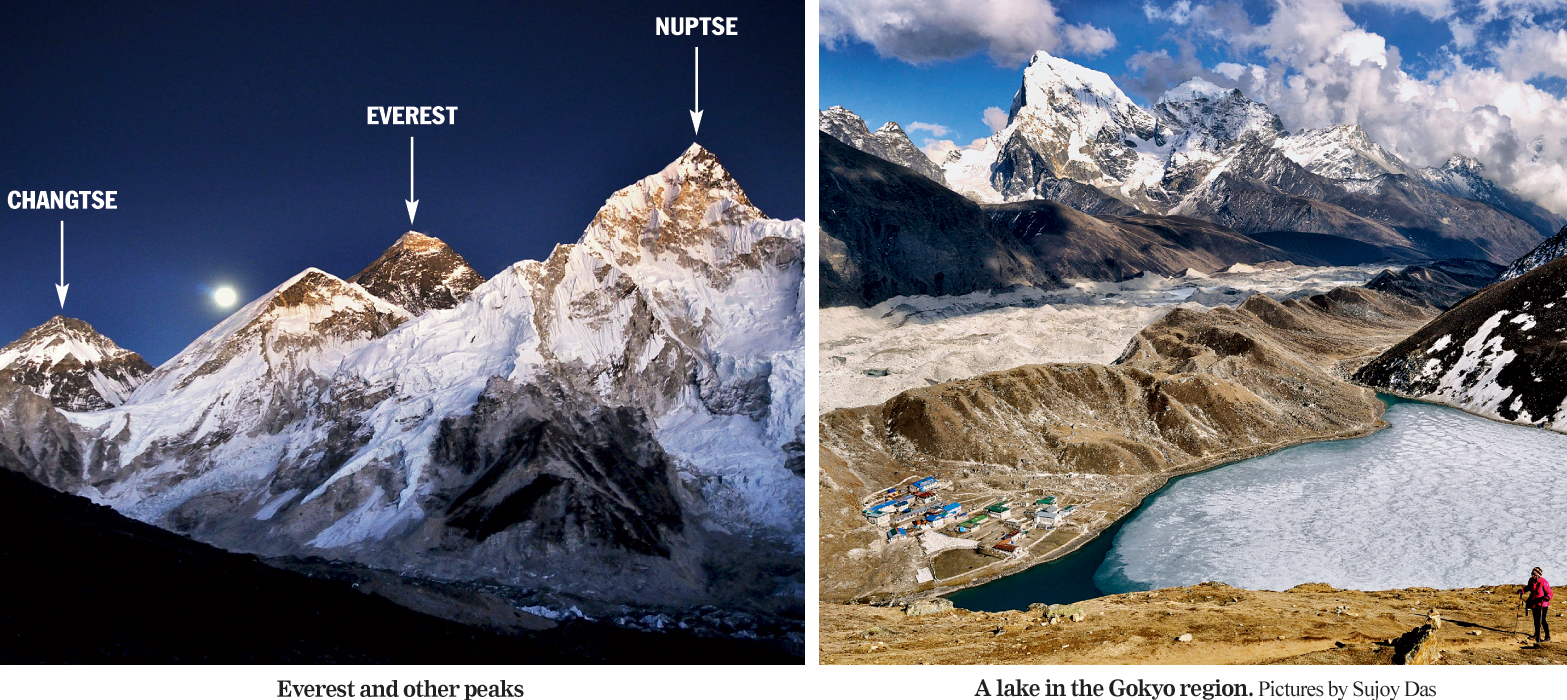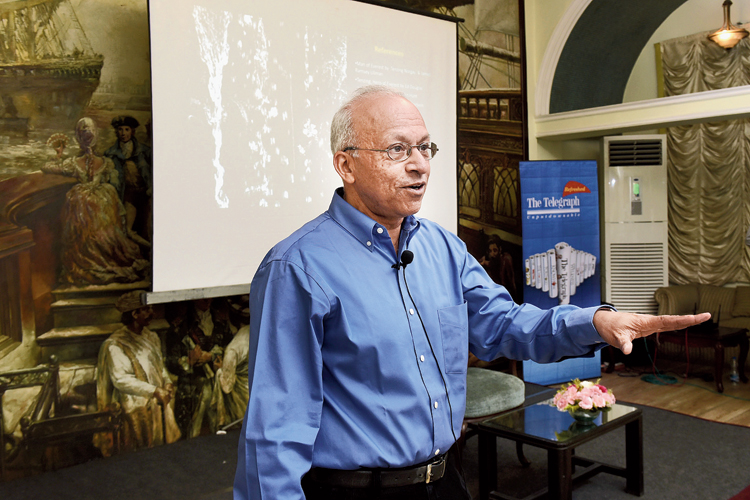
Kancha, the last surviving sherpa of the 1953 British Everest Expedition, points himself out in a photograph of the expedition
When Tenzing Norgay returned from the summit of Everest in 1953, the sherpas told him there would be no more jobs for them because nobody else would want to climb the mountain.
This was one of the many stories shared by a mountain photographer at a programme recently.
The Everest story came from a meeting with a sherpa who was part of the first successful Everest expedition.
“Kancha Sherpa is the lone survivor of the 1953 expedition. He told me that after Tenzing Norgay came back from the summit, the sherpas greeted and congratulated him but also told Tenzing that nobody would come to climb Everest any more. They said there would be no more jobs for them,” said Sujoy Das, who met Kancha Sherpa at his home in Namche Bazar two years ago.
But the apprehensions of the sherpas were shortlived, Das said while delivering the Bengal Club Library Talk, in association with The Telegraph, on The Lure of the Everest: Romance, Reflections and Reality.
Edmund Hillary and Tenzing Norgay were the first to reach the summit of Everest on May 29, 1953.
“Kancha is in his 80s but is very fit. When I met him he told me he was 18 years old when he went on the expedition. He told me ‘I was the helper of the cook. I carried load all the way to the base camp. I helped the cook and gave the sahibs the breakfast’. He also has a photograph sent to him by the British of the Everest expedition,” Das told The Telegraph.

The Telegraph
Kancha Sherpa was able to go on that expedition only because of Tenzing. “He had never been on an expedition before. That was his first expedition and Tenzing had asked him to come along,” Das said.
Das showed images of overcrowding on Everest to underline how the reality turned out to be quite the opposite of what the sherpas had feared.
He made his point with a photograph clicked by mountaineer Nirmal Purja in May last year. “Nirmal Purja was attempting to climb all the 8,000m peaks within seven months and he succeeded in doing so. He took the photograph to show that he was stuck in a summit ridge behind the climbers. He wanted to show his climb would be delayed, not to show overcrowding on the mountain. But the photograph went viral and created a major uproar,” Das said.
Another photograph clicked by a German climber in 2012 showed a queue of people on the Lhotse face of Everest, clicked by a German climber in 2012. “It shows that way back in 2012, Everest was already getting crowded. It was there in 2012 and maybe earlier, but it came to life in 2019,” he said.
Das shared statistics collected from a research site that said about 10,000 people have reached the summit of Everest so far.
“In the first 25 years, there were 84 people who reached the summit. But between 2010 and 2019, more than 4,500 mountaineers reached the summit,” he said.
Das visits the Solukhumbu district, home of the sherpas, in the north-east of Nepal once or twice a year for photography and trekking.
He has been going there since the late 1990s and it was in October 1998 that Das got a chance to interact with Edmund Hillary and photograph him.
Das has gone up till Kala Patthar, an Everest viewpoint, at 5645m.
“In 1951, it was from Kala Patthar that mountaineers Eric Shipton and Edmund Hillary first saw the route to Everest. When the British sent them to find the way from Nepal, they climbed Kala Patthar and about 200m above and from there they saw the route to Everest,” he said.










